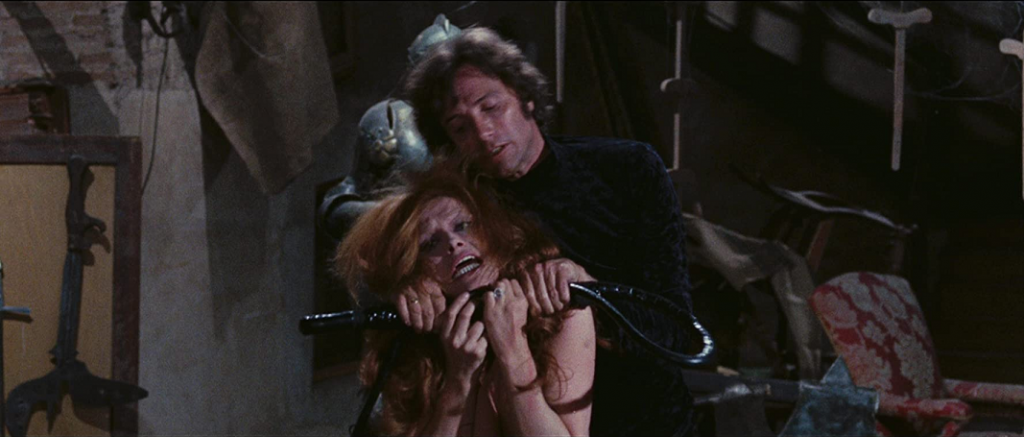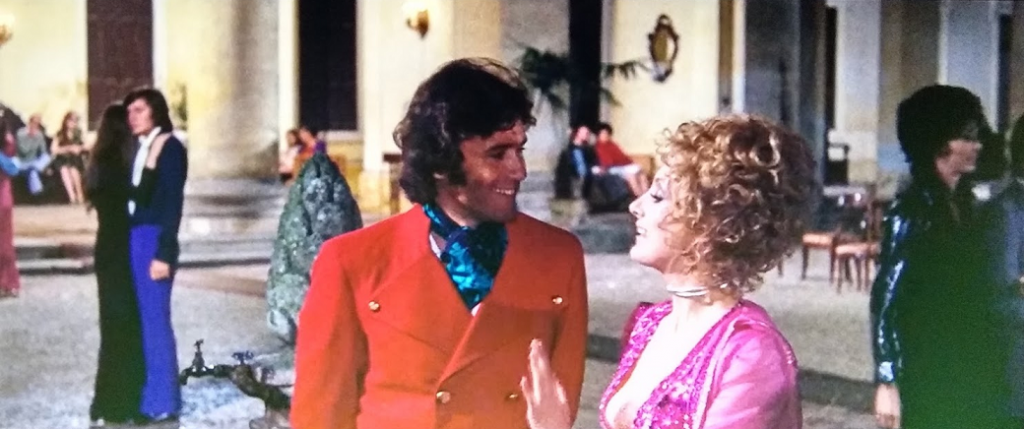The Night Evelyn Came Out of the Grave (1971)
[ IMDB | Rotten Tomatoes | Wikipedia ]

IMDB says that this had 9 different English language edits, some with such radical alterations that the plot was incomprehensible. There’s much nudity (as with most giallo) so that probably contributed to the detrimental editing, and it is probably common when distributing these films for more prudish audiences.
The movie opens as a deranged patient attempts to escape from Dr. Richard Timberlane psychiatric hospital. He is captured and not seen from again, but both Dr. Timberlane and madness play a part in the subsequent drama.
Lord Alan Cunningham, once a patient of Timberlane’s, had lost his wife Evelyn and now seduces women who look like her, bringing them back to his estate to torture and kill, often falling into a mania where he hallucinates reprimands from his deceased wife. First to die in the film is a prostitute, then Susan the exotic dancer. Alan is being blackmailed by Evelyn’s brother Albert who watches the proceedings with a mix of perversion and horror, but probably just greed, and demands cash for his silence.

There are three notable themes echoed from other giallo films: much of the action occurs in Alan’s decrepit estate castle (cf. the the author’s estate in Your Vice), a man obsessed by the painting of a dead woman (also Your Vice, but there it was his mother), and the reading of a will (The Queen Kills). All of these Gothic tropes are likely to appear in other giallo films.
Alan at one point attends a seance with Miranda the psychic who was introduced to him by the wheelchair-confined aunt Agatha. His cousin, the playboy, George Harriman also attends and is set to inherit the family estate if Alan … cannot. Suspicious, no?

The third redhead of the flick (not including the eponymous Evelyn), Gladys, shows up at George’s party and she and Alan are married the next day. Whaaaa? To avoid any further redhead-induced mania, he hires only blonde maids with the same short, curly hair. These films tell as much in their visuals as their dialog. Soon he is seeing his wife again, and the camera presents those visions with the same visual distortion as the escaped mental patient at the start of the film. Meaningful? Maybe.
The last part of the film: Evelyn is not in her crypt, Albert is murdered, Agatha is murdered (come on, you know most characters will be murdered in these films), and a pool full of acid provides justice without the gore you’d hoped for.